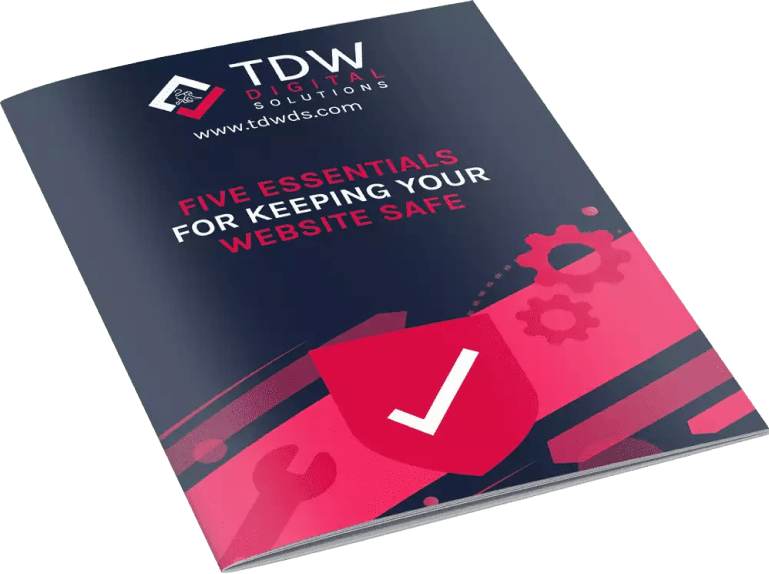Introduction: The Growing Security Threat to WordPress Websites
WordPress powers 43.4% of all websites globally, making it the world’s most popular content management system. However, this popularity comes with a significant downside: WordPress websites are under constant attack. Recent statistics reveal that approximately 13,000 WordPress sites are hacked every single day, with sites facing malicious attacks every 22 minutes.
For business owners in Essex and across the UK, these aren’t just alarming statistics—they represent real threats to revenue, reputation, and customer trust. In 2025, WordPress security vulnerabilities have increased by 34% compared to the previous year, with over 6,700 new vulnerabilities identified in just the first half of the year.
This comprehensive guide explores the essential WordPress security best practices you need to implement in 2025 to protect your business website from increasingly sophisticated cyber threats.
The Real Business Pain Points: Why WordPress Security Matters
Before diving into solutions, it’s crucial to understand the devastating impact a WordPress security breach can have on your business.
Financial Devastation and Unexpected Costs
The financial impact of a hacked WordPress website extends far beyond simple repair costs. UK businesses face an average of £25,700 in clean-up costs following a security breach, including system restoration, hardware replacement, and enhanced security implementation. For businesses specifically, the UK Government’s Cyber Security Breaches Survey 2025 found that the average cost of the most disruptive breach was £3,550, though this figure often underestimates the full financial impact.
Beyond immediate remediation, businesses lose revenue through website downtime. When your website is offline or displaying malicious content, every minute represents lost sales, missed enquiries, and opportunities handed to competitors. E-commerce websites face particularly severe consequences, with hackers stealing customer credit card information directly from checkout pages.
Reputational Damage That Lasts for Years
Your website represents your business’s digital storefront and professional credibility. When visitors encounter security warnings such as “This site may be hacked” or “Not secure” displayed by browsers like Chrome, trust evaporates instantly. A Ponemon Institute study found that reputational costs—including abnormal customer turnover and loss of goodwill—accounted for over 40% of total breach costs, averaging $1.57 million.
Customer confidence is fragile. Once your business experiences a security breach, rebuilding trust requires far more time and resources than implementing proper security measures from the outset.
SEO Penalties and Lost Organic Traffic
Google penalises hacked websites severely, directly impacting your online visibility. Search engines may lower your rankings, causing your site to drop several pages in search results and become virtually invisible to potential customers. In severe cases, Google completely removes compromised sites from search results until issues are resolved and verified.
For businesses that rely on organic search traffic for leads and sales—which includes most modern businesses—these penalties can undo years of SEO investment and content marketing efforts.
Legal Liability and Regulatory Compliance
When customer data is compromised through your website, your business faces potential legal liability under data protection regulations. UK organisations must comply with GDPR requirements, and failures can result in substantial fines. The average cost of data breaches in the UK stands at £3.4 million, with regulatory penalties adding significant financial burden to technical recovery costs.
Operational Disruption and Staff Stress
Beyond measurable costs, security breaches create operational chaos. Staff members spend hours or days scrambling to address the incident rather than focusing on revenue-generating activities. Customer service teams field complaints from frustrated visitors unable to access your services. IT teams work overtime to restore functionality, often requiring emergency developer support that comes with premium price tags.
The 2025 WordPress Security Threat Landscape
Understanding current threats helps contextualise why security best practices are essential.
AI-Powered Attacks Are Outsmarting Traditional Defences
In 2025, hackers increasingly leverage artificial intelligence and automation to identify and exploit vulnerable WordPress sites. AI tools can scan thousands of websites in seconds, identifying sites with outdated core software, plugins, themes, and exposed configuration files. These automated attacks have contributed to 7,966 vulnerabilities registered in WordPress last year—a 34% increase from the previous year.
AI enables hackers to conduct more sophisticated attacks, including:
- Enhanced Brute Force Attacks: AI predicts password patterns and tests leaked credentials, breaking into admin accounts within seconds
- XSS (Cross-Site Scripting): AI rewrites malicious payloads until they bypass security rules and steal admin session cookies
- SQL Injection: Automated testing of different injection techniques exploits weak database security
Plugin Vulnerabilities Remain the Biggest Risk
Plugins account for 89-92% of all WordPress vulnerabilities, making them the primary attack vector for hackers. With nearly 60,000 free plugins available in the WordPress directory, many site owners unknowingly install poorly coded or abandoned plugins that introduce security weaknesses.
Even premium plugins aren’t immune. In 2024, major security issues affected popular plugins like Essential Addons for Elementor, leading to over 20,000 site infections. Outdated plugins are responsible for 92% of WordPress vulnerability reports, yet nearly 50% of website administrators haven’t enabled auto-updates for WordPress, plugins, and themes.
Common Attack Methods in 2025
The most prevalent WordPress security threats include:
- Malware infections (72.7% of site infections)
- Unauthorised backdoor access (69.6%)
- Brute force login attempts
- SQL injection attacks
- Cross-Site Scripting (XSS) (53.3% of all vulnerabilities)
- Cross-Site Request Forgery (CSRF)
- Phishing attacks (85% of businesses affected)
Essential WordPress Security Best Practices for 2025
Implementing these fundamental security measures significantly reduces your vulnerability to attacks.
1. Keep WordPress Core, Themes, and Plugins Updated
Outdated software is the single biggest vulnerability for WordPress websites. A staggering 61% of infected websites feature an out-of-date WordPress version, providing hackers with known vulnerabilities to exploit.
Action steps:
- Enable automatic updates for WordPress core, plugins, and themes
- Review and remove unused plugins and themes immediately
- Only install plugins from reputable sources with regular update schedules
- Monitor plugin security advisories through services like WPScan
For business owners managing multiple responsibilities, manually tracking updates across dozens of plugins becomes impractical. This is where professional WordPress care plans provide invaluable protection by automating updates and monitoring for vulnerabilities continuously.
2. Implement Strong Authentication Measures
A shocking 81% of WordPress websites get hacked due to weak or stolen passwords. Username and password credentials represent your website’s front door—weak authentication is equivalent to leaving that door unlocked.
Action steps:
- Never use “admin” as your username
- Create strong passwords containing uppercase and lowercase letters, numbers, and special characters
- Implement Two-Factor Authentication (2FA) for all administrator accounts
- Limit login attempts to prevent brute force attacks
- Add CAPTCHA to login forms to block automated bots
3. Install Comprehensive Security Plugins
Modern security plugins provide multi-layered protection against the sophisticated threats WordPress faces in 2025. Wordfence, one of the leading security solutions, blocks 330 million malicious hits every single day, including over 6.4 billion brute-force attacks in the last 30 days alone.
Key security plugin features:
- Web Application Firewall (WAF): Blocks SQL injections, XSS attacks, and zero-day exploits before they reach your site
- Malware Scanner: Automatically detects and removes malicious code injections
- Real-Time Threat Intelligence: Updates defences against emerging threats continuously
- Login Security: Prevents unauthorised access through multiple authentication layers
However, security experts emphasise that no single plugin is foolproof. Comprehensive protection requires a multi-layered approach combining security plugins with server-side hardening, monitoring services, and professional maintenance.
4. Secure Your WordPress Database
Your WordPress database stores all your website’s content, user information, and critical settings. A misconfigured database leaves this valuable data exposed to SQL injection attacks and breaches.
Action steps:
- Change the default database prefix from “wp_” to something unique
- Use strong credentials at the database level
- Restrict database user privileges to minimum necessary permissions
- Regular database backups stored securely off-site
5. Implement SSL Certificates and HTTPS
SSL certificates encrypt data transmitted between your website and visitors, protecting sensitive information like login credentials and payment details. Websites without SSL certificates display “Not secure” warnings in browsers, immediately damaging credibility.
Benefits of SSL/HTTPS:
- Encrypts data transmission
- Builds visitor trust with security indicators
- Improves SEO rankings (Google prioritises HTTPS sites)
- Prevents man-in-the-middle attacks
6. Regular Backups Are Your Safety Net
Even with robust security measures, no website is completely invulnerable. Regular backups ensure you can restore your website quickly following any security incident, minimising downtime and data loss.
Backup best practices:
- Automated daily backups of files and databases
- Store backups in multiple locations (cloud storage, off-site servers)
- Test restoration procedures regularly to ensure backups actually work
- Retain backups for at least 30 days
Professional WordPress care plans include automated backup solutions with verified restoration capabilities, providing business owners with genuine peace of mind.
7. Harden WordPress Security Settings
WordPress security hardening involves configuring settings to reduce attack surfaces and limit potential damage from successful breaches.
Hardening measures:
- Hide WordPress version numbers
- Disable file editing in the WordPress dashboard
- Protect wp-config.php and .htaccess files
- Remove unnecessary WordPress files like readme.html and license.txt
- Implement proper file permissions
- Disable XML-RPC if not required
8. Monitor User Access and Permissions
Compromised user accounts provide hackers with legitimate access to your website’s backend. Proper user management limits potential damage from compromised credentials.
Access control best practices:
- Remove unused user accounts immediately
- Assign minimum necessary role permissions (avoid giving everyone Administrator access)
- Audit user accounts regularly
- Monitor user activity for suspicious behaviour
- Remove default admin accounts
9. Choose Secure WordPress Hosting
Your hosting environment forms the foundation of your website’s security. Poor hosting choices undermine even the most diligent security practices.
Secure hosting features:
- Server-level firewalls and malware scanning
- Regular security patches and updates
- Isolated hosting environments (avoid shared hosting for business-critical sites)
- DDoS protection
- SSL certificates included
- Automated backups
10. Regular Security Audits and Monitoring
Proactive monitoring detects vulnerabilities and suspicious activity before they escalate into full breaches.
Monitoring essentials:
- Regular vulnerability scanning
- File integrity monitoring
- Suspicious activity alerts
- Security audit logs
- Dark web monitoring for leaked credentials
For businesses without dedicated IT teams, professional WordPress care plans provide continuous security monitoring, immediate threat response, and regular security audits performed by experienced WordPress specialists.
Why Professional WordPress Maintenance Matters
Implementing comprehensive WordPress security requires technical expertise, ongoing vigilance, and significant time investment. For business owners focused on growing their companies, managing WordPress security becomes a distraction from core business activities.
The reality is stark: most small business owners neglect website security until their site gets hacked and they start losing money. At that point, emergency remediation costs far exceed the investment in preventive maintenance.
Professional WordPress maintenance services solve this challenge by providing:
- Automated security updates applied promptly without breaking functionality
- Continuous security monitoring detecting threats 24/7
- Regular backups with verified restoration capabilities
- Malware scanning and removal
- Security hardening implemented by WordPress experts
- Priority support when security issues arise
TDW Digital Solutions’ WordPress care plans are specifically designed to address the security pain points Essex businesses face, providing comprehensive protection that allows you to focus on running your business whilst experts safeguard your digital presence.
Conclusion: Invest in Prevention, Not Emergency Recovery
WordPress security in 2025 requires proactive, multi-layered protection against increasingly sophisticated threats. The statistics are unambiguous: thousands of WordPress sites are compromised daily, resulting in devastating financial losses, reputational damage, and operational disruption for businesses.
However, implementing essential security best practices—keeping software updated, enforcing strong authentication, using comprehensive security plugins, securing databases, implementing SSL, maintaining backups, hardening WordPress, managing user access, choosing secure hosting, and conducting regular audits—dramatically reduces your vulnerability to attacks.
For Essex businesses seeking reliable WordPress security without the technical complexity and time investment, professional WordPress maintenance provides comprehensive protection and genuine peace of mind. Don’t wait until your website is compromised to prioritise security.
Protect your business today. Explore TDW Digital Solutions’ WordPress care plans and discover how professional maintenance keeps your website secure, fast, and always available for your customers.


